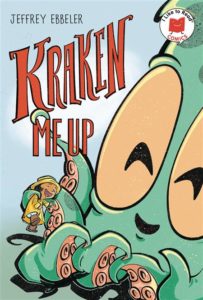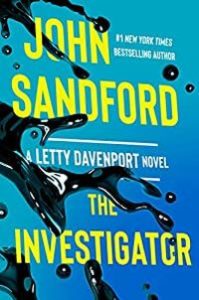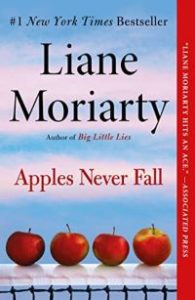WE: A New Translation by Yevgeny Zamyatin (translated by Bela Shayevich)
Some words are worth repeating. If repeated enough and over an elongated amount of time, these words might even be worth refining, reshaping, and repurposing for a new age and for a new context. In Bela Shayevich’s new translation of Yevgeny Zamyatin’s classic dystopian, WE, words have undoubtedly been refined, given a new shape and purpose, and in some cases, just flat out repeated.
This latest translation of a science fiction standard is both refreshing and brilliant. It is refreshing in that it revitalizes a work of literature that was written over a century ago in a foreign tongue–between the years of 1920 and 1921 in the midst of the Russian Civil War–by using contemporary English prose that is both captivating and thought provoking. It is brilliant in that it uses said prose to bewitch the postmodern reader into believing that this work was written for them. Detach Zamyatin’s name and context from this work, and remove the hundred year gap between today and the work’s original audience, and one is left with a beautifully written novel about the perils of totalitarian authorities, the dystopian reality of a utopic vision, and the consequence of dissent. Shayevich’s translation is written for “us,” or for the “we” of today.
That said, not even a snake could writhe or contort out of Zamyatin’s contextualized grip on this work; and rightfully so, as WE was written for, to, and in a very specific time and context. While the idea of disassociating this work from its proper context in order to reveal the timelessness of its themes and meanings is enticing, it is also somewhat futile. For, the contextual background surrounding the composition and publication history of this novel is part of what makes this work so intriguing and impactful. Written in the throes of the Russian Revolution, Zamyatin and his works were suppressed by Soviet authorities. Though the novel was completed in 1921, it wasn’t published until 1924; and that publication was an English translation of Zamyatin’s work. After its original completion, WE became the first banned book by the Soviet censorship board. A Russian edition of the book wasn’t formally published in the Soviet Union until 1988–fifty one years after the author’s death. Thus, while a primary thread in the novel’s plot deals with chains of events caused by a dissident’s actions, this novel’s fictionalized happenings serve as a metanarrative of Zamyatin’s real-life circumstances, as the consequences of his actions mirror the themes of suppression and “unfreedom” described in the novel.
Shayevich’s translation is bolstered by a well written introduction by Margaret Atwood, author of The Handmaid’s Tale, whereby she eloquently situates this novel within its historical and literary context. Add the two essays that are tacked on to the back end of this new translation, and one is in for a rather enjoyable read. The first essay is a review of Zamyatin’s original work, written by George Orwell, the author of 1984. The second essay imagines Zamyatin as his own primary protagonist fending off the forces of Stalinsim. This essay was written by famed sci-fi and fantasy writer, Ursula K. Le Guin. These three reading materials are treasures in their own right. Place a genre defining work of art in the middle of them, and one is in for a real treat.
The primary protagonist of Zamyatin’s WE is D-503. Born within a world whereby individuality is a criminal offense and “unfreedom” is the ultimate goal of existence, D-503 is an exemplary cog in the autocratic machine he serves. In this state of being–known as the One State–rationality reigns supreme. While detailing the mathematical calculations involved in designing the One State’s “table of sex days”–a scheduled hour of time whereby each member of society is allowed to engage in intercourse with an assigned member of the oppsite gender–D-503 suggests that “[f]rom this, you can see how the powerful force of logic purifies everything that it touches. Oh, if only you, unknown readers, could also come into the light of this sacred force, if only you could also learn to follow it to its conclusion.”
Detailed through a series of log entries, D-503 acts as the story’s narrator while he describes the completion of the INTEGRAL, a massive ship that will be used to transport the message of the One State to the far reaches of outer space. Serving as one of the builders in charge of mathematics for this project, D-503 makes use of every opportunity given to explain the One State’s superiority over all other civilizations. Beginning with the One State’s decimation of all but .2 percent of the world’s population, thus putting an end to the the infamous Two Hundred Years War, and ending with his extremely personal struggle between the superiority of cognitive freedom and the allure of human emotions, D-503 paints a vivid picture of what it is like to serve the One State.
Throughout his story, readers surmise the impact that this fictional society has upon its individuals, even when said society is attempting to squeeze individuality out of its members. In D-503’s logs, readers encounter the ever present eyes and ears of the Benefactor–the One State’s all powerful, supreme ruler. This omnipresent awareness of the Benefactor is aided by the One State’s civic infrastructure. All of the buildings in this society, with very few exceptions, are made entirely of glass. Blinds are placed within living quarters, but are prohibited from use outside of “the sex times” mentioned above. Additionally, citizens are subjected to forced curfews and are only allowed to deviate from their “table of hours”–a detailed schedule that all citizens must follow–if given permission via a government appointed doctor.
At the start of his log entries, D-503 is paired with O-90, his appointed female counterpart who is just as happy with her place in society as he is. “O,” as he affectionately calls her, is registered as a non-child bearing female due to her being “10 centimeters shorter than the required Maternal Norm.” D-503 and O-90 are paired together due to logic and rationality. This is a stark contrast to D-503’s relationship with a woman he is introduced to early on his logs, I-330. The inconsistent emotions and lack of logical, calculated awareness D-503 displays whilst in I-330’s company produces the conflict needed to make this story work. While “O” is a conformed member of society throughout most of the novel, “I” is rebellious and serves as the primary instigator of dissent within “D-503’s” world.
As D-503 and his companions discover secret truths concerning the One State and the mysterious Green Wall that marks its borders, a seed of revolt begins to grow within. The budding of this seed, coupled with some engaging translation work on Shayevich’s part, provides the readers with an engaging and well developed story. However, be fair warned. This is classic science fiction. Ideological and philosophical musings are laced throughout D-503’s log entries. Thus, if one finds Asimov’s Foundation series off-putting, this might not be the book for them. Yet, if one is into classic dystopian tropes and storylines, this story might be the perfect fit, as it serves as one of the primary forbearers of such tropes and storylines, alongside Jack London’s The Iron Heel.
For those interested, this fantastic new translation is located in the New Fiction section of the Joplin Public Library.












